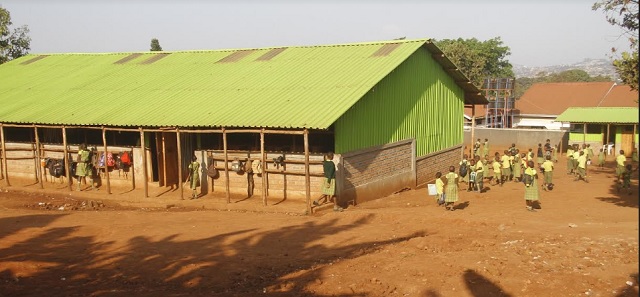
After settling with education ministry, focus now on pioneer P7 candidates
Kampala, Uganda | IAN KATUSIIME | After nearly a year of bickering with the government of Uganda in and out of the courts, Bridge International Academies appears to have crossed over to a better relationship and possible bright future.
And it almost entirely depends on how their fast batch of Primary Seven candidates performs in the national exams this November. They are 46 in number.
“We have put them through a lot of preparation and we are excited,” one of the Bridge officials said recently. They did not say which particular school the pupils are. Over 12,000 pupils are currently enrolled at 63 Bridge Academies across the country.
The positive note follows agreements reached with the government on outstanding issues that saw the American founded schools do battle with the government in court to avert being closed in a saga that crested in 2016. Last year saw suits and countersuits as both sides accused each other of overreach.
Sources tell The Independent that Bridge officials are still in negotiations with the government, represented by the Ministry of Education but Bridge and the ministry officials have been reluctant to talk to the media. They say they fear scuppering the negotiations. Sources say the First Lady Janet Museveni, also the Minister for Education and Sports has been involved in the negotiations at some point.
But The Independent has reliably learnt that one of the agreements reached was to get their issues out of court. Sources also say that teams from the ministry and the schools are working closely on reviewing the curriculum of the schools.
After the last court ruling in December demanded the closure of Bridge schools in Uganda, there were fears from pupils and parents about the fate of the schools. Although the schools got a temporary order against the closure, some overzealous policemen and local government officials were seen cracking down on the schools and ordering pupils to vacate the premises.
A recent visit to one of the schools-Bridge International Academy Nsumbi, located in Nansana, Wakiso district shows an institution trying to provide an education in a rural community; a core goal of the schools.
The school has 270 pupils studying from nursery level up to Primary Seven (P7). The Nsumbi branch is yet to have its first P7 class although there is a designated room. Stationed on less than an acre, the school has plans of expanding to a nearby plot to accommodate more pupils.
As a way of mitigating usual heat, the school’s iron sheets have been buffered by dry papyrus reeds in typical Bridge’s budget classroom construction which avoids any bells and whistles. The bare-bones facilities the academies offer are often picked on by critics. Bridge, however, says its mission is to provide education at a very low cost and it does. In a country where parents pay hundreds of thousands if not millions of shillings in fees, Bridge Academies charge a paltry Shs80,000 per term. That is part of the reason why parents who want a quality education but cannot afford the costlier school cried and held protests when Bridge schools faced closure.
Much as the negotiations between Bridge have put the closure fears behind them, there are still concerns since education as a social service is decentralised. Schools upcountry are licensed by the respective local governments. Observers say that this may not mean that officials like Chief Administrative Officer (CAOs), and District Education Officers (DEOs) will give the schools an easy pass.
In fact, Bridge Schools faced a lot of challenges upcountry. In districts like Mubende, the schools regularly clashed with municipal authorities over licensing, teaching time, and school records.
Scorecard
Bridge Schools officials say they have addressed the three main challenges facing primary school education outcomes in Uganda. These are insufficient subject knowledge on the part of teachers, particularly in the areas of pedagogy and curriculum content, teacher absenteeism, and lack of textbooks. In some cases up to 90% of Primary 4 classes do not have textbooks. These findings are contained in a 2015 report titled ‘Are our children learning? Five stories on the state of primary education in Uganda’ published by Twaweza; a research organisation on education.
On teacher knowledge, Bridge says its teachers are intensively trained on child-centred learning and modern classroom management techniques.
According to Bridge, its tech based monitoring systems where teachers are required to log in online through their teacher tablet eliminates the problem of teacher absenteeism. They have a centrally managed support centre where absences are reported. The management of Bridge indicates that it tries to keep its pupil to textbook ratio at 3:1.
Mary Goretti Nakabugo, the Country Manager of Twaweza says the organisation did not do specific studies on Bridge International Academies. However in an interview with The Independent last year she faulted the school’s approach on focusing on passion among teachers. “One has to combine technical knowledge and passion,” she said, “There are many passionate people out there who lack the requisite skills and knowledge and that cannot work in the long term.”
Meanwhile, critics of the schools are unyielding. Connie Galiwango, the Woman MP for Mbale district and Chairperson of the Committee on Education and Sports told The Independent that she is not yet convinced about Bridge’s standards. “We do not think they should be operating. Hon Margret Rwabushaija (Workers MP) tabled a motion complaining about the schools. We visited one of the schools in Kumi and we are not satisfied,” she said.
The other relentless army of Bridge critics include Education International, a global federation of teachers’ trade unions based in Belgium. In Uganda, Uganda National Teachers’ Union (UNATU) and a couple of NGOs have criticised the schools. The managers of Bridge Academies insist they are unfazed.
Their initial plan was to construct 350 academies with a target of educating 135,000 pupils on top of creating jobs for 3450 permanent staff, 1000 direct jobs at Bridge in support roles and 2000 other indirect jobs. When all this in place, Bridge is looking at an overall investment of Shs87billion in the Ugandan economy. The plans include opening up academies in far-off places like Karamoja.
****
 The Independent Uganda: You get the Truth we Pay the Price
The Independent Uganda: You get the Truth we Pay the Price

